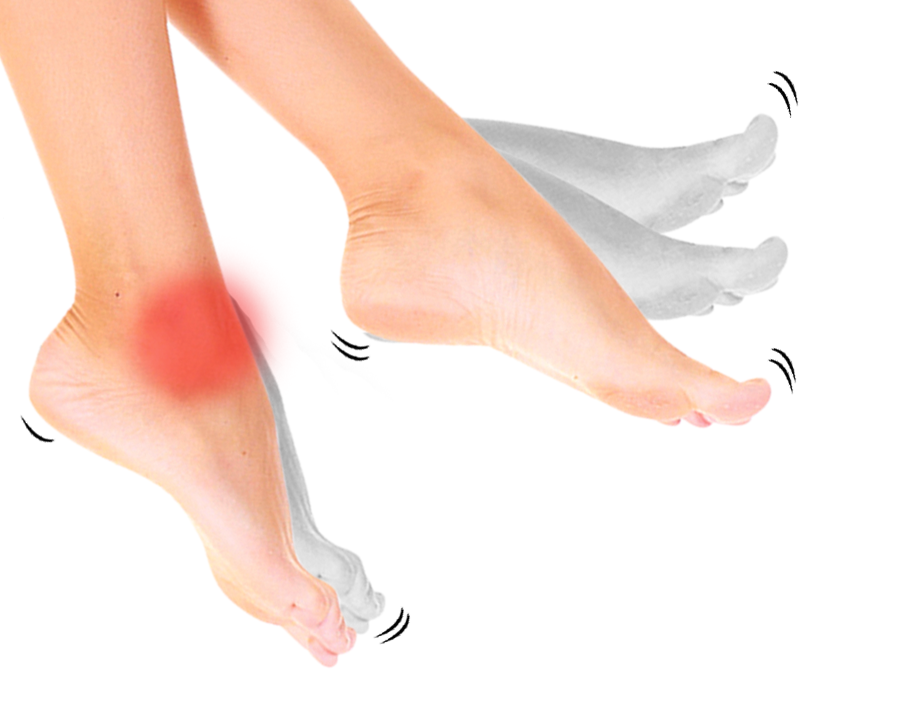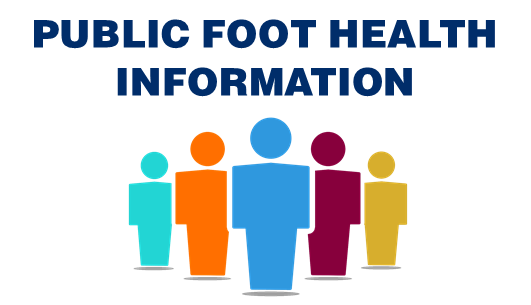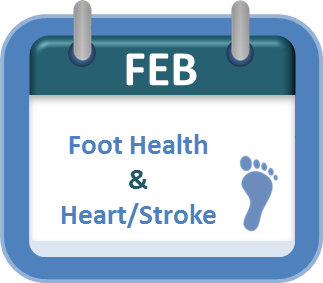|
Drop Foot & Stroke
The focus during heart and stroke month is the identification of the condition and podiatric and physical therapy treatment options. Treatment varies as does the severity of drop foot after a stroke. A lot depends on your activity level and willingness to engage in long-term physical therapy to strengthen the affected muscles. Active movement and exercise helps to strengthen the connections between the muscle and the brain. Check the three simple questions below. Your answers will tell you when it is time to see a podiatrist for foot health care to address drop foot. Since your stroke or last assessment, are you finding it more difficult to walk or move safely from your bed to a chair?
Do you have difficulty getting outside?
Do you have difficulty getting around to handle tasks of daily living?
|  Foot drop is common after a stroke. It is a weakness or paralysis that limits your ability to raise the front part of your foot. The foot or ankle drops down when the leg is lifted to take a step. If you have foot drop you may trip and fall if your foot and ankle are not supported by a brace at all times. Foot drop can result when nerves are damaged during a stroke. The muscles are rarely damaged, but become weak because of lack of use following a stroke. Partial or complete recovery is possible with the help of rehabilitative therapy. Podiatrists have an important role in examining and treating the biomechanical complications from stroke, including drop foot. Foot drop is common after a stroke. It is a weakness or paralysis that limits your ability to raise the front part of your foot. The foot or ankle drops down when the leg is lifted to take a step. If you have foot drop you may trip and fall if your foot and ankle are not supported by a brace at all times. Foot drop can result when nerves are damaged during a stroke. The muscles are rarely damaged, but become weak because of lack of use following a stroke. Partial or complete recovery is possible with the help of rehabilitative therapy. Podiatrists have an important role in examining and treating the biomechanical complications from stroke, including drop foot. Symptoms Physical examination findings consistent with a drop foot are difficulty clearing the foot during the swing phase of the gait cycle, a steppage gait, an equinovarus deformity of the foot and ankle, and an uncontrolled foot slap. Motor symptoms present with drop foot as well as weakness of other muscles that the common peroneal nerve supplies. An essential component of drop foot is paresthesias that accompany the distribution of the common peroneal nerve. While we resist getting into highly technical descriptions of conditions while engaging in public information and public education, something called radiculopathy at the L4/5 level is the most commonly recognized cause of drop foot. It is usually the result of a disc herniation or foraminal stenosis at that level compressing the L4 and/or L5 nerve roots. In simpler terms, radiculopathy is most often referred to as a “pinched” nerve. It is a condition due to a compressed nerve in the spine that can cause pain, numbness, tingling, or weakness along the course of the nerve. Radiculopathy can occur in any part of the spine, but it is most common in the lower back (lumbar radiculopathy) and in the neck (cervicalradiculopathy). It is the lower back trigger to the foot action – referred to earlier as Lumbar Spinal Disc injuries L4-L5 .
Causes Stroke is linked to a CVA or cardiovascular accident. Cardiovascular accident (CVA) is a disease defined as a sudden neurological deficit (e.g. weakness, loss of sensation or other) due to a vascular cause. The deficit must last for longer than 24 hours and is of sudden onset. A stroke occurs when an artery to the brain becomes blocked or ruptures, resulting in death of an area of brain tissue (cerebral infarction) and causing sudden symptoms. Symptoms of CVA occur suddenly and can include muscle weakness, paralysis, abnormal or lost sensation on one side of the body, difficulty speaking, confusion, problems with vision, dizziness, loss of balance and coordination and drop foot. Treatment The assistance of a plastic brace, also known as an ankle-foot orthosis (AFO), can be helpful. These braces support the foot and ankle to help minimize tripping and reduce fall risks. Physical therapy and ankle-foot orthotics are two of the three main treatments for foot drop; electrical stimulation is the third. With neuromuscular electrical stimulation (NMES), your leg muscle is directly stimulated. This helps your nerves fire, making your muscles contract. Over time, the idea is that your leg muscles will be retrained. While the same approach may not work for each stroke survivor, trial and error can help podiatrists working with physical therapy protocols determine the best possible treatments. The single use of one treatment option is strongly discouraged as a combination of treatments in linear fashion should maximize the function of the patient. |





